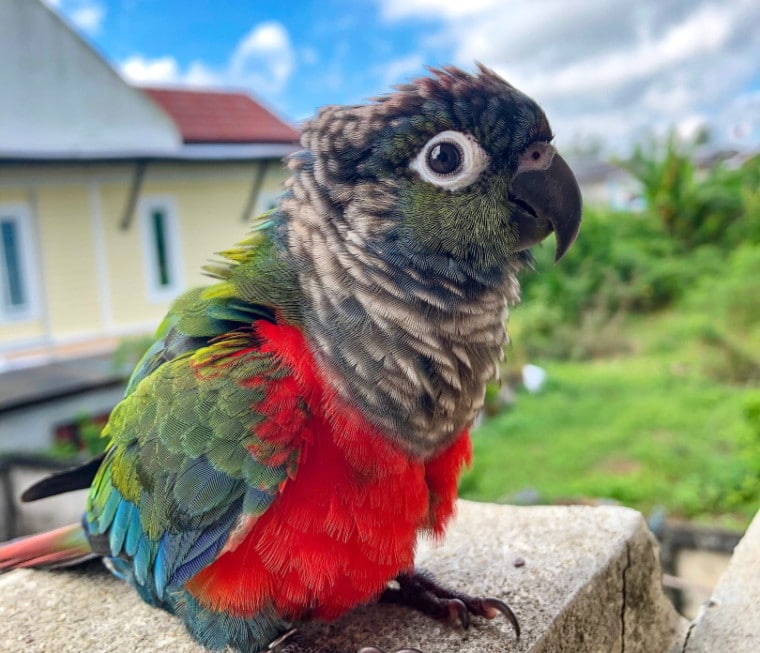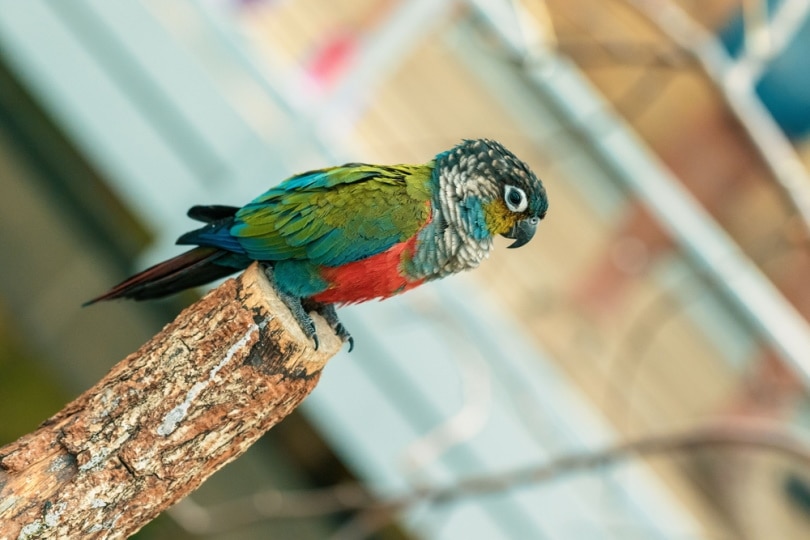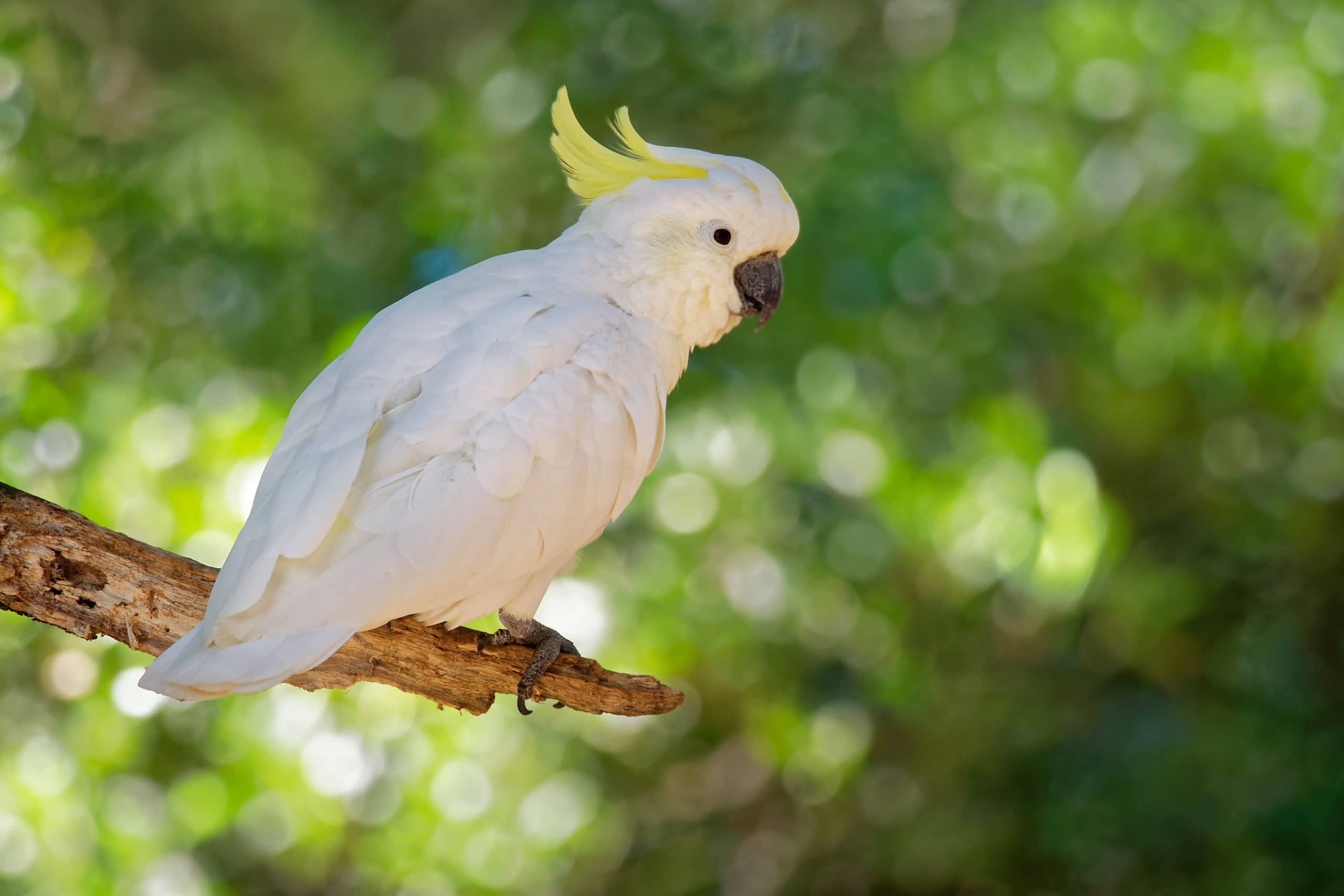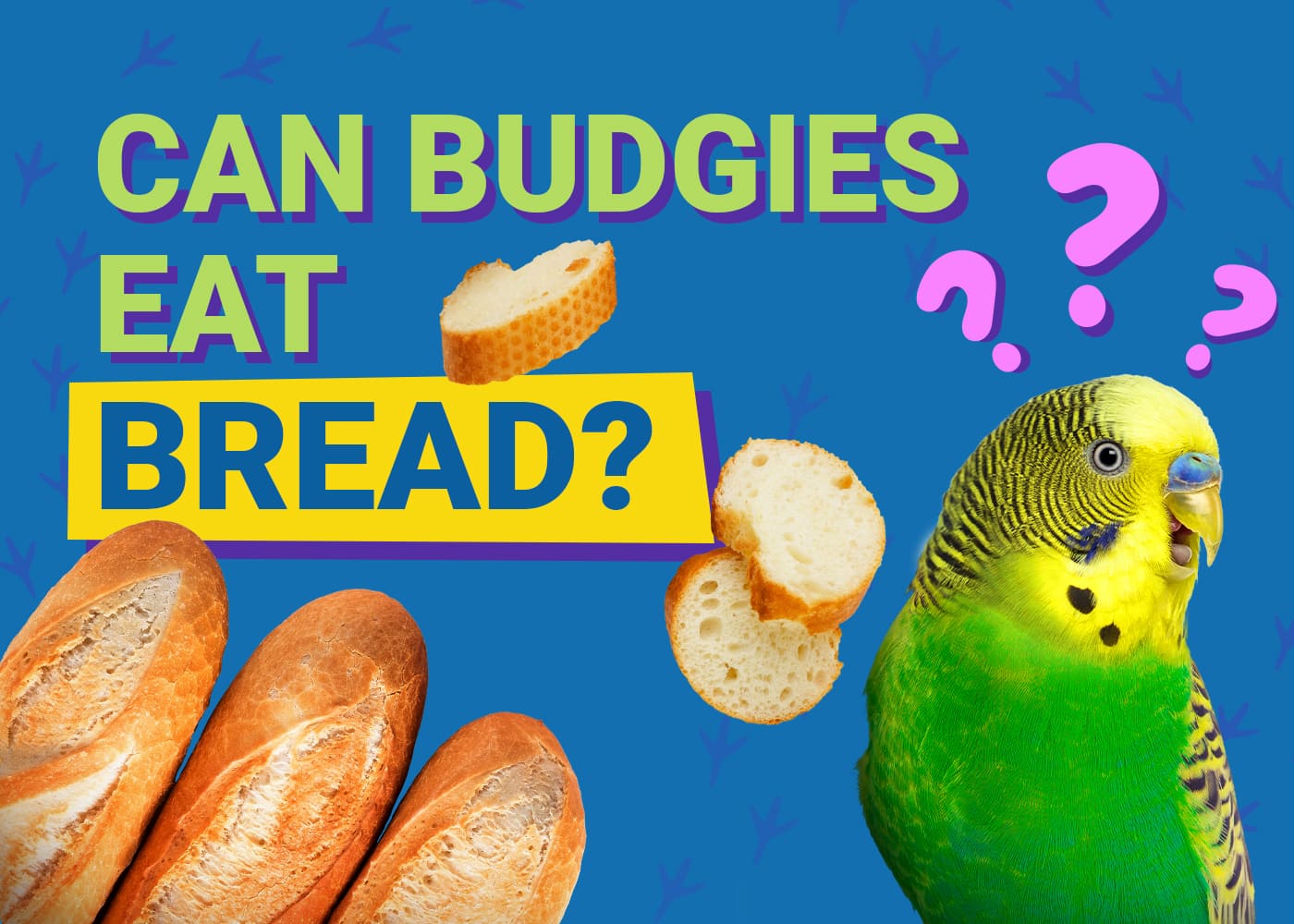
The Crimson Bellied Conure is one of many species of Conure, and some owners prefer to call it a Crimson Bellied Parakeet. It’s a colorful bird that usually stands about 9 inches tall and has white eye-rings. If you are thinking about getting one of these attractive birds for your home but would like to know more about it first, keep reading as we discuss its origin, temperament, diet, and more.
Species Overview
| Common Names: | Crimson Bellied Conure, Crimson Bellied Parakeet. |
| Scientific Name: | Pyrrhura perlata |
| Adult Size: | 9 inches |
| Life Expectancy: | 20 years |
Origin and History
You can find the Crimson Bellied Conure in the Amazon rainforest of South America, where it is still common in Bolivia and Brazil. While its range is at risk for deforestation, The International Union for Conservation of Nature classifies it as “least concern.” Scientists once thought it was similar to the Pearly Parakeet and put it into the Pyrrhura rhodogaster species, but the information that decision was based on turned out to be false, so they renamed it the Pyrrhura perlata.
Temperament
The Crimson Bellied Conure is one of the most popular conures kept as pets because it is extremely lively and friendly. It’s one of the few cuddly birds that will often form strong bonds and cuddle with their owner. Its call is soft and pleasant, and it will often whistle melodies or mimic sounds it hears in the home. It’s quite affectionate and can even act silly when it’s getting the attention it craves, hiding in your clothes and in your hair. However, it will get much louder if you ignore it or spend too much time away from home, and it may even start to tear apart things in its cage.

Speech & Vocalizations
The Crimson Bellied Conure has soft and pleasing vocalizations unless it feels left out or ignored. In most cases, these birds are one of the quieter conures that you can purchase, making it a great choice for small apartments and children. It makes more frequent chirps when it is having fun and tends to mimic sounds that it hears in the house, like alarm clocks, doorbells, television melodies, and even the dog barking. Your bird might even learn a few words to say to you.
Crimson Bellied Conure Colors and Markings
The Crimson Bellied Conure is a colorful bird with a bright red belly, as the name suggests. The back, wings, and thighs are mostly green, but the wings can have turquoise coloring on the bottom half, and there is a little more of this color on the upper back. The head, neck, and chest are white and grey with some green patches for cheeks and some light blue on the forehead. The eyes have a ring of white around them, and there is usually some red coloring in the tail.
Caring for the Crimson Bellied Conure
One of the best things about owning a Crimson Bellied Conure is that they are not difficult to keep healthy and happy. We recommend purchasing a cage that’s at least 2 feet wide, 2 feet deep, and 2 1/2 feet tall, but a larger cage will work even better. Inside the cage, you will need at least three perches that your bird can use to move around, and they also help to keep the claws in good shape.
You will also need to add a food and water bowl to the cage, and many owners like to provide a bathing area. Soft wooden toys are perfect for keeping the beak strong and sharp. There are plenty of commercial products that you can purchase, or you can build them if you are handy with tools.
Common Health Problems
Your Crimson Bellied Conure is an extremely healthy bird with a long lifespan of 20 years or more and no known health problems they are predisposed to acquiring. The most common problem you are likely to face is diarrhea brought on by eating too much fruit, which should pass in a day or so, but it can also result from bacteria or parasites. If your bird ate something that it doesn’t usually eat or it is a new addition to your home, we recommend taking your pet to the vet to have it looked over so you can be sure you are providing the best treatment.
Diet and Nutrition
Your Crimson Bellied Conure will primarily eat seeds, flowers, fruit, and vegetables. There are several commercial brands available that will help you provide your pet with a balanced diet to keep it happy. We recommend choosing a brand with no chemical preservatives or artificial coloring. We also recommend occasionally providing your pet with fresh fruit, like apple slices, to help you bond and give your bird a treat that it will enjoy. However, you don’t want to overdo it with fruit because it can lead to diarrhea, so keep the portions small and infrequent.
Exercise
Your Crimson Bellied Conure will enjoy time out of the cage as frequently as you can allow. Most experts recommend allowing your pet to roam around exploring your home for at least 4 hours each day. This activity will help give your bird the exercise that it needs to stay healthy, giving it a better chance of reaching its maximum lifespan.
Where to Adopt or Buy a Crimson Bellied Conure
The Crimson Bellied Conure is quite popular, so there is a good chance you will find one at your local pet store. We recommend setting aside at least $450 to purchase your bird, but it can be considerably pricier if you need to locate and travel to a breeder.


Final Thoughts
The Crimson Bellied Conure is a wonderful pet that doesn’t make as much noise as many other breeds, so it is more tolerable in enclosed spaces and is even suitable for apartment life. It doesn’t require a cage that’s too large, and it doesn’t require any special lighting or humidity. It is a friendly species that is noticeably happy when you are around and will often climb on your head and in your clothes while it’s playing.
We hope that you have enjoyed reading this guide and that it has helped answer your questions. Perhaps we even convinced you to purchase one of these colorful birds for your own home!
Featured Image Credit: Kittyukari, Shutterstock








